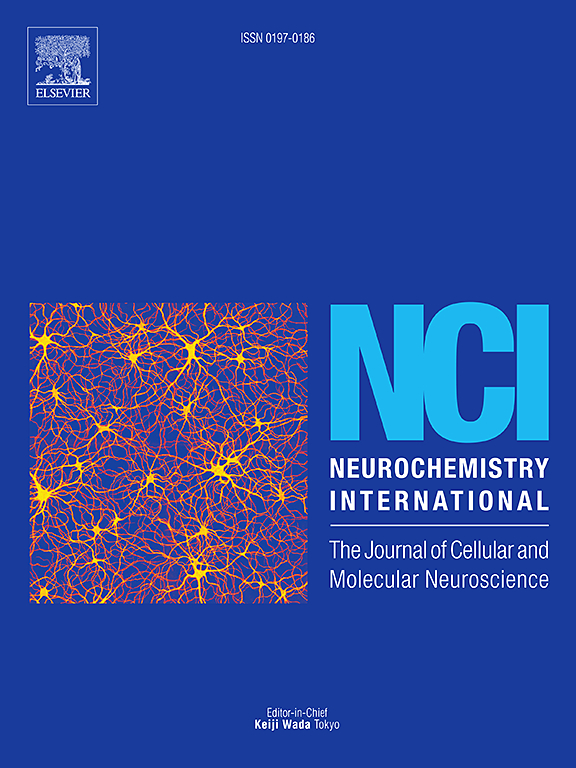慢性炎症性疼痛抑制酒精摄入和伏隔多巴胺反应
IF 4
3区 医学
Q2 BIOCHEMISTRY & MOLECULAR BIOLOGY
引用次数: 0
摘要
酒精使用障碍(AUDs)受到引发、维持和/或诱发复发的因素的影响。慢性疼痛既是AUD的危险因素,也是AUD的后果,它们共享影响中脑边缘多巴胺能系统的神经通路。本研究探讨炎症性疼痛如何影响alcohol-naïve大鼠的长期酒精摄入和中脑边缘多巴胺传递。在8周龄的Sprague Dawley大鼠中使用完全弗氏佐剂(CFA)诱导炎症性疼痛,而对照组使用生理盐水。遵循两种方案:一组连续使用20%乙醇一个月(n = 10/性别),第二组连续使用三个月(n = 8/性别),采用两瓶选择模式。每周使用Von Frey试验评估机械性伤害感受。在第二个队列中,在最后1.5个月的乙醇暴露期间,通过微透析测量伏隔核核心的多巴胺水平。由于实验的局限性,动物在首次引入酒精后的不同时间点进行微透析,这是通过性别和组交替平衡的方式进行的。暴露于酒精一个月后,大鼠的饮酒量没有差异。然而,从第二个月到最后,大鼠表现出非性别依赖性的酒精摄入量减少,cfa动物明显减少。这种减少伴随着伏隔核中乙醇诱发的多巴胺释放减弱。此外,低机械性伤害感觉在cfa -动物中一直保持到实验结束。这些发现为疼痛对酒精引起的神经化学反应和饮酒行为的影响提供了见解,显示了疼痛如何改变多巴胺对酒精的反应,影响饮酒模式并延长CFA的伤害感受。本文章由计算机程序翻译,如有差异,请以英文原文为准。
Chronic inflammatory pain suppresses alcohol intake and accumbal dopamine response
Alcohol use disorders (AUDs) are influenced by factors that initiate, maintain, and/or induce relapse. Chronic pain is both a risk factor for and consequence of AUD, sharing neurological pathways that affect the mesolimbic dopaminergic system. This study examines how inflammatory pain impacts long-term alcohol intake and mesolimbic dopamine transmission in alcohol-naïve rats. Inflammatory pain was induced in eight-week-old Sprague Dawley rats using complete Freund adjuvant (CFA), while controls received saline. Two protocols were followed: one group had continuous access to 20 % ethanol for one month (n = 10/sex), and the second group for three months (n = 8/sex) in a two-bottle choice paradigm. Mechanical nociception was assessed weekly using the Von Frey test. Dopamine levels in the nucleus accumbens core were measured through microdialysis during the final 1.5 months of ethanol exposure in the second cohort. Due to experimental limitations animals underwent microdialysis at different time points after alcohol was firstly introduced, this was done in a balanced manner by alternating sex and group. After a month of alcohol exposure, rats showed no differences in alcohol consumption. However, from the second month until the end, rats exhibited a non-sex-dependent decrease in alcohol intake, significantly lower in CFA-animals. This reduction was accompanied by a blunted ethanol-evoked dopamine release in the nucleus accumbens. Moreover, low mechanical nociception was maintained until the end of the experiment in CFA-animal. These findings provide insights into the effect of pain on alcohol-elicited neurochemical responses and drinking behaviour, showing how pain alters dopamine response to alcohol, affecting drinking patterns and prolonging nociception from CFA.
求助全文
通过发布文献求助,成功后即可免费获取论文全文。
去求助
来源期刊

Neurochemistry international
医学-神经科学
CiteScore
8.40
自引率
2.40%
发文量
128
审稿时长
37 days
期刊介绍:
Neurochemistry International is devoted to the rapid publication of outstanding original articles and timely reviews in neurochemistry. Manuscripts on a broad range of topics will be considered, including molecular and cellular neurochemistry, neuropharmacology and genetic aspects of CNS function, neuroimmunology, metabolism as well as the neurochemistry of neurological and psychiatric disorders of the CNS.
 求助内容:
求助内容: 应助结果提醒方式:
应助结果提醒方式:


